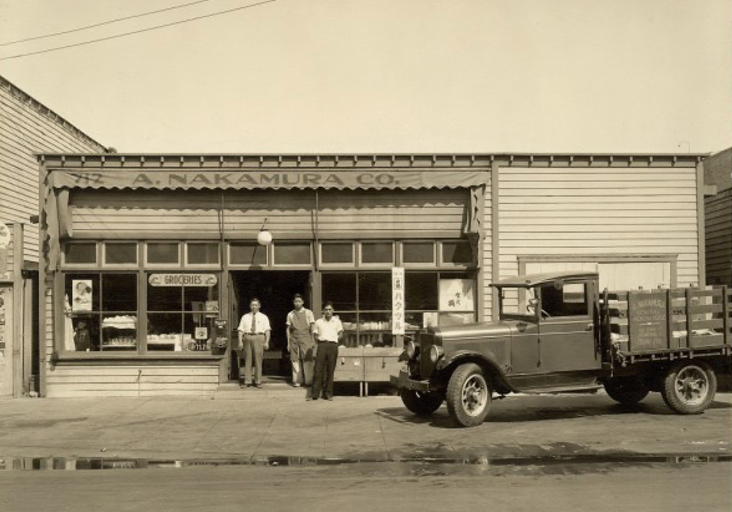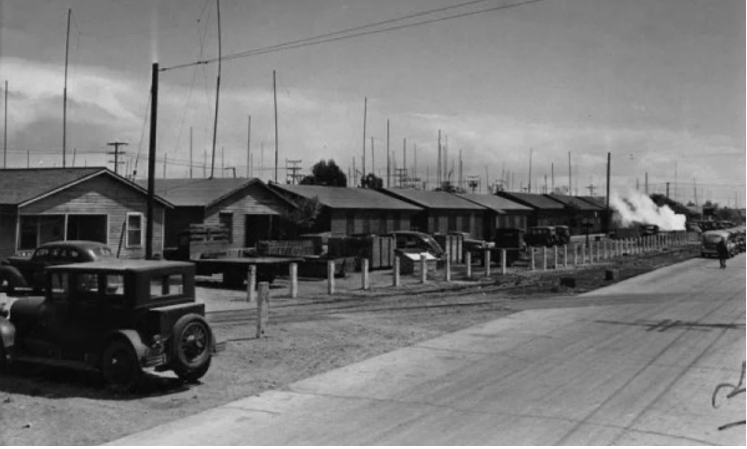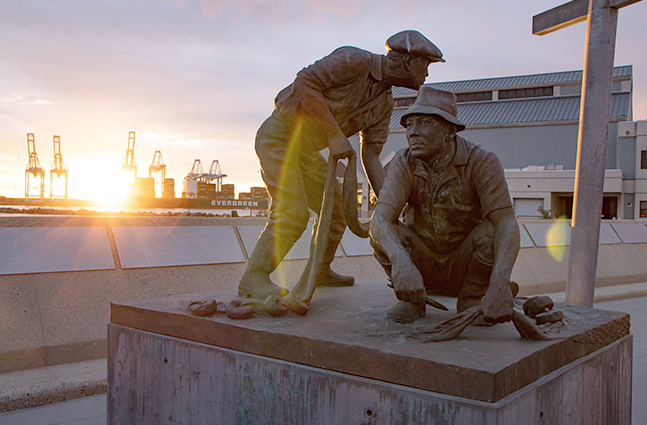CommentsHISTORICAL PERSPECTIVE - Feb. 19 marks the 80th anniversary of when Terminal Island’s residents became the first Japanese Americans on the West Coast to be forcibly removed from their homes.
They were forced to evacuate their homes within 48 hours and had to leave almost all of their possessions behind.
Los Angeles has always been a place that forever asks, “What does the past have to do with me?”
And with every new redevelopment project our history and our heritage is razed, bulldozed, remade, covered up and or otherwise obliterated from memory. Los Angeles has gotten particularly good at it, since institutions lose institutional memory the way a man with a hole in his pocket loses money.
The Port of Los Angeles was considering a plan to demolish the old StarKist Cannery this past December. San Pedro residents with ties that go back generations with the cannery made their voices heard and demanded the building be preserved and repurposed.
The project would involve demolition of the main building (Plant No. 4) and the northern and southern portions of the East Plant and a water-side dock. The 16.5-acre parcel sits on Terminal Island amid a heavily industrialized area.
The port’s environmental study determined that the site did not qualify for historic status based standards for inclusion in the National Register of Historic Places, the California Register of Historic Resources and the Los Angeles Historic-Cultural Monument.
This move sparked concern for the remaining buildings of Japan Town on Terminal Island. Central San Pedro Neighborhood Council member, Gina Lumbruno, had taken an interest in the building over the past year and researched the backgrounds of many of the pre World War II properties still standing on Terminal Island.
“The port deemed Japan Town’s only buildings remaining are on Tuna Street from addresses 700 through 744,” Gina explained. “The Port’s master plan called for knocking these buildings down. It’s so ridiculous. The LA Conservancy came and fought for these buildings. So the port had them deemed historical.”
Gina says there is still one building that remains in peril.
“You have to go on that Japan Town’s website and you can plug in the addresses,” Gina explained. “It’s so sad because it’ll tell you which addresses were demolished and what ones are extant, which means they’re still standing.”
Gina explained that the port has provided the council a historical inventory report that included the addresses 700, 702 and 712 on Tuna Street. But it did not include 744 Tuna Street. The Nakamura Company store was located at 712 Tuna Street while the Tokyo Aloha Restaurant was located at 744 Tuna Street.
Gina noted that the port is supposed to put out an inventory report of the historical buildings every two years.
Gina learned that the building at 748 Tuna Street was built by Vincent Thomas, the assemblyman from San Pedro for which the bridge is named. It was a market. Then Harbor Light restaurant and market took over.
“I think maybe about 10 years ago, a Korean couple started a restaurant there at 748 and they got their lease taken away two years ago.”
Gina didn’t know the reason it was taken away, but believed the port likely made it difficult for the couple to keep the lease because they had other uses for the property in mind.
“To me that might be a sneaky underhanded way of getting them out of there,” Gina explained.
“That was the only thing open [for food]. Truckers used to have coffee and food there. That was the only place on the island to get anything.”

Nakamura Company at 712 Tuna Street, a store that was founded by a Japanese fisherman. Photo courtesy of Derek Nakamura
Legacy, History and the Present
Derek Nakamura said he was always aware that his grandfather’s store was still standing on Terminal Island. He just didn’t know the port was looking to tear down what remained.
Until recently, he’d bring his family to visit Tuna Street to look at the Star-Kist cannery and what’s left of the Japanese village that once thrived there, known as Fish Harbor.
Fish Harbor was entirely man-made. Construction, according to Naomi Hirahara and Geraldine Knatz, authors of Terminal Island: Lost Communities of Los Angeles Harbor, began in 1915. Based on plans drawn by engineer E.P. Goodrich, Fish Harbor was built to help separate the shipping and fishing industries in the fast-expanding Los Angeles Harbor.
The crews of fishermen were primarily Japanese born (Issei) or American citizens whose parents were Japanese nationals (Nisei). Beginning in the early 1900s, Japanese fishermen were actively recruited by big canneries on the West Coast because of their skill at catching sardines and the increasingly popular albacore tuna.
It is thought that there were some Japanese fishermen in the Los Angeles Harbor by the start of the 20th century. There was definitely a Japanese encampment at Timm’s Point in San Pedro by 1912. With the creation of Fish Harbor, canneries, particularly Van Camp, recruited and hired hundreds of Japanese workers, many of whom hailed from the seaside state of Wakayama in Japan.

Fishing Village on Terminal Island.
The canneries soon built more than 300 houses for workers and their families behind the harbor. A thriving community of around 2,000 to 3,000 souls was born.
“There was a whole village, with dwellings akin to barracks where the workers lived before the war,” Derek said.
Derek’s great grandfather, a fisherman, founded A. Nakamura Company at 712 Tuna Street. When fishing season ended, he worked in the store with his daughter (Derek’s grandmother, Aiko).
Derek’s father’s generation didn’t talk much about their experience in the internment camps. Derek would go to Terminal Island and visit the memorial and the old store more than his dad and uncle did.
But once the memorial at Terminal Island was erected, Derek regularly took his father to visit. Derek’s uncle was a member of the Terminal Islanders, a landscaping company, widely known for creating Japanese gardens that were popular in the 1970s.
The Nakamuras lived in San Pedro before they were forced to dispose of all possessions they couldn’t take with them on a bus or a train. Their final destination was the internment camp called Manzanar. The Manzanar War Relocation Center was one of ten camps where the U.S. government incarcerated Japanese immigrants ineligible for citizenship and Japanese American citizens during World War II.
Manzanar is off the 395 Freeway, in Inyo County on the east side of the Sierra Nevada and southeast of Yosemite National Park. Derek’s father was born there. Derek had to retrieve his father’s birth certificate when he passed away last year.
One of his few relatives willing to talk to Derek about that period of the family’s history was an aunt, who explained that the men particularly didn’t like talking about that experience. “She would tell me the men wouldn’t talk about it really because they felt ashamed and because they love the U.S.,” Derek explained.
“In Japan, you weren’t considered Japanese if you were not born in Japan,” Derek said. “In the United States you weren’t considered American even though you were born here.”
They were more willing to talk about their exploits in World War II as members of the 442nd Infantry Regiment, the most highly decorated unit of its size, that fought in the European theater of the war.
Derek still has the flyers that were put on the doors announcing the evacuation. Families were only allowed to carry bedding and linen (no mattresses), toiletries, extra clothing for family members and essential personal effects.
“You got to take one bag or whatever belonging to you. Then you [and your family] had to get on the bus, and then a train,” Derek said.
As dark as those moments were, Derek relayed moments of human kindness and grace that he learned from family who lived through the experience. In one case, Derek noted that some soldiers guarding the camps allowed detainees to go fishing at night at the lake in the back of Manzanar.
“We were very lucky since we had more than one grocery store,” Derek explained. “We had another grocery store that was on First Street, but before that, my grandmother Aiko was friends with a lot of Caucasians and they saved a lot of stuff for us. And after the war, they gave it all back.”
“It’s very rare. The same thing happened over here in San Gabriel, there’s a San Gabriel nursery that’s Japanese-owned. They signed over the deed to a Caucasian family and when they came back from the internment camps, the Japanese family didn’t have the money to get it back. The Caucasian family transferred the nursery back to the Japanese family without charge. There were a lot of good people. There were a lot of bad. There was a mixture.”
“I guess it’s under preservation to some extent,” Derek said, referring to the old grocery at 744 Tuna Street. “But the port still wants to take down all that stuff.”
Derek connected with Gina after she made a post that included a picture of Derek’s great grandfather on the San Pedro Facebook page about Terminal Island.
“I said, ‘That’s my great grandfather’s shop!’ From then on we started talking.”
That’s when Derek learned Gina was trying to get what’s left of the buildings on Tuna Street preserved. Gina invited Derek to speak at a neighborhood council meeting last year and he’s been kept in the loop ever since.
“There was a little restaurant, a dry goods store, and something else and that’s all that’s left,” Derek explained. “Gina is proposing a mural.”
Derek likes the idea, but hopes something more can be done — like a museum.
“Since they have the statues there with the mural and their names there telling the story of the Japanese fishing village there, I was thinking we could turn it into a small museum.”
Derek imagined the possibilities for a moment: “If we could have a docent tour through all those buildings and have all the artifacts and information about Terminal Island, you know, people could learn more about it and understand … The first step is just keeping it.”
But monied interests don’t want us to keep it. They prefer that our memory becomes washed out and erased. It makes it that much easier to restrict our imaginations and limit our claims to all belongs to us as citizens.
(Terelle Jerricks, during his two decade tenure, has investigated, reported on, written and assisted with hundreds of stories related to environmental concerns, affordable housing, development that exacerbates wealth inequality and the housing crisis, labor issues and community policing or the lack thereof. This story was featured in Random Lengths News.)






